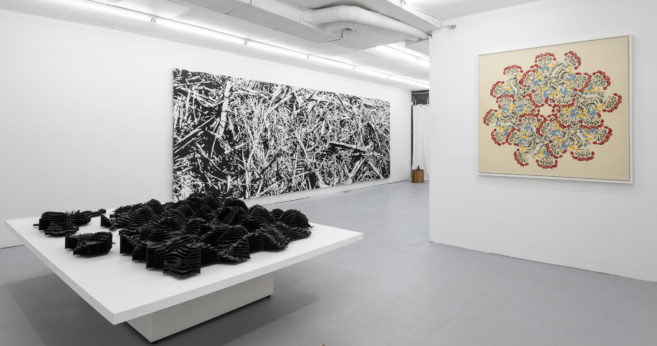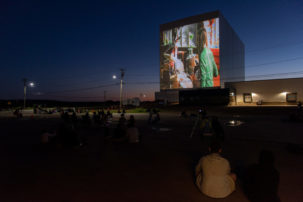By its very (physical) nature, dance is antithetical to the cinematic. Bodies that leap into the air on stage, after all, must land with an audible sound—with real, live bodies, there is no option to cut away.
Revisor (from Vancouver production company Kidd Pivot) makes no such assertions, although it has the readiest of claims. A re-envisioning of Nikolai Gogol’s 1836 play The Government Inspector, a farce about bureaucracy and control, Revisor’s narrative epicentre is a part-time anarchist mistakenly presumed to be a powerful government inspector in disguise. All dialogue is delivered via pre-recorded audio track, to which the dancers mouth the words as their bodies flail in punctuation of phrases or syllables. Thus the irregular rhythms of dramatic speech are the kinetic scaffolding onto which the dancers’ bodies are placed. Although the musical score matters, its role is sidelined to that of timekeeper rather than motivating force—in a Fritz Langian turn, the music measures the body like a mechanism.
Through this technical gesture, each character’s voice is severed from the performer’s live body. Even with extensive dialogue, dancers are free to move and breathe without worrying about vocalization or projection. The disembodiment of voice therefore allows a hyper-embodiment of movement, a necessary tactic given that the dancers spasm like android marionettes. Movements are paused, truncated and looped as though someone is controlling the performance from a jog wheel at an editing desk, occasionally rewinding to check a position or to gather momentum. Quick motions are repeated under strobe light, cutting the visibility of the performer’s body and revealing more surgically exact movements than should be possible. Meanwhile, the inevitable synch-slippage between voice and mouth convinces us that we’re watching a tape recording of earlier events. Crucially, that most commonplace and physics-defying of cinematic gestures, the edit, is omnipresent here—and we’re alerted to this from the outset. A “revisor” is, after all, an editor.
Midway through, we rewind to the beginning. The same scenarios we’ve already seen replay in , but without dialogue. Instead, an analyst narrates the on-stage actions, as though reviewing raw footage and offering running commentary. Her voice, rather than providing the clinical comfort of a historian or the deus ex machina of the oracle, is unsettlingly illuminating. Her descriptions of the movements on stage, didactic in tone, critique our viewership. Subtextually, she asks, “it’s so obvious what’s happening here, these bodily metaphors for power, control and deception…how could you not have seen it before?”
Indeed, despite the political themes and the farcical approach to power and bureaucracy betrayed by the libretto, this edit-gesture is where the performance’s true political punch rests. The conclusive answer is that we were too busy listening to the earlier chatter of the narrative to pick up on the actual plot, which was here (and elsewhere, and always) revealed by the interaction of bodies.







